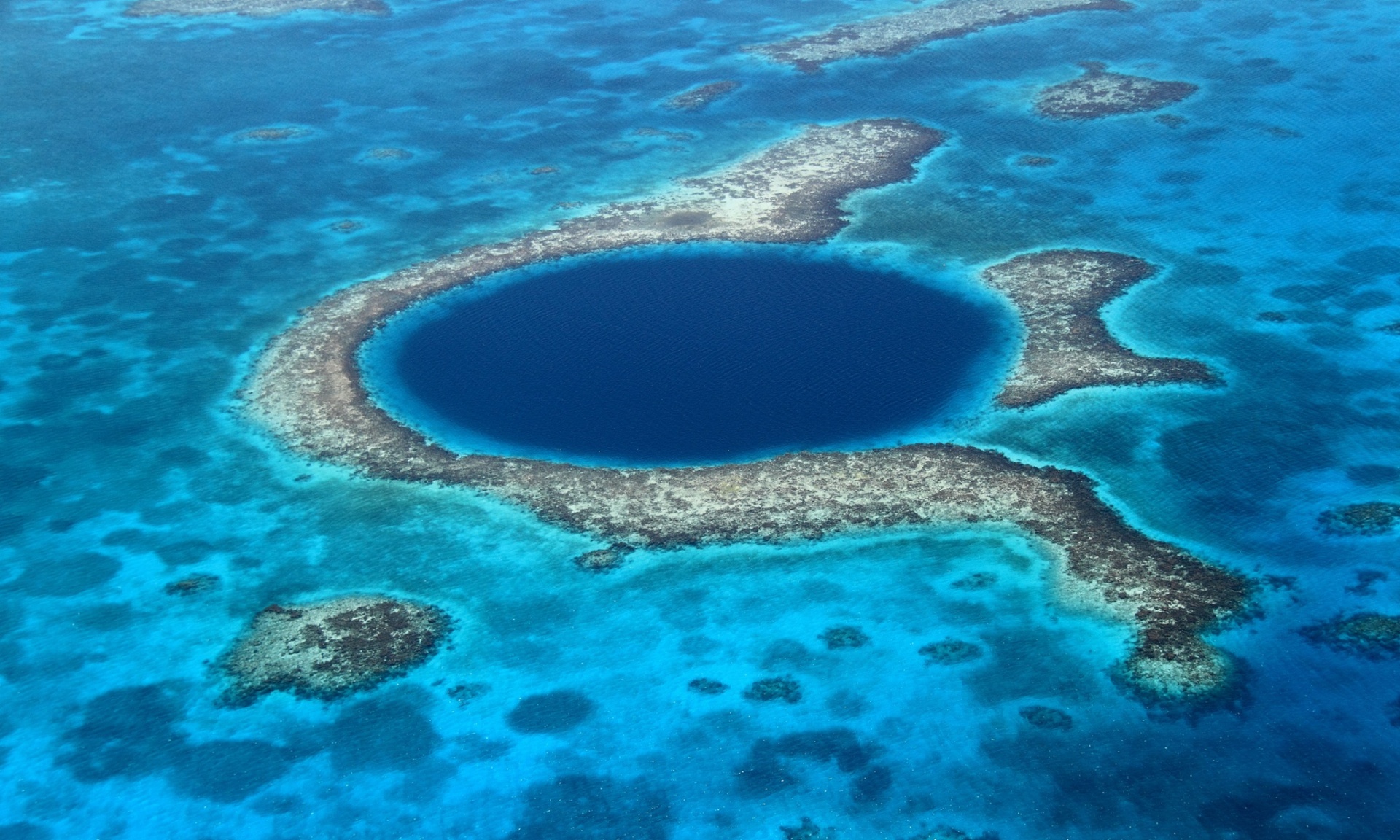A massive underwater sinkhole surrounded by reefs, caves and sharks has provided archaeologists with clues in the mystery of the fall of the Mayan civilization, according to new research.
Scientists from Rice University and Louisiana State University found evidence in Belize’s Great Blue Hole, a 400ft-deep cave in a barrier reef, that supports the theory that drought and climate conditions pushed the Mayans from a regional power to a smattering of rival survivors and finally a virtually lost civilization.
The researchers took sediment samples from both the ancient sinkhole and the central Belize lagoon corresponding to the era of the Mayan decline, between 800 and1000 AD. In those samples they tested the ratio of aluminum and titanium – a sign of heavy rainfall from tropical cyclones pounding the element out of the rock and into the sea. Their study on the lagoon, which has yet to be published, complements one published last year in Scientific Reports on the Hole, and found relatively little titanium, meaning there had been fewer tropical cyclones and longer droughts than normal during those two centuries.
Evidence of droughts as a factor in Mayan civilization’s long decline has been growing for years, including stalagmite evidence found in 2012, but the Great Blue Hole is better aligned with the path of storm systems passing over the ancient Mayan capital city of Tikal. The Yucatan peninsula lacks natural water resources, so the Mayans relied on rainfall that accumulated in limestone sinkholes – natural sinkholes called cenotes (sometimes also used for religious rituals) and manmade cisterns called chultunes. Several prolonged periods of drought, like those the evidence suggests, could have quickly drained the Mayans’ stores of potable water.
Famine, unrest and war are natural consequences of a water crisis – the Mayans farmed on difficult soil and lived in a fractious, combative culture. By 900 AD any Mayan cities had been abandoned; a second period of droughts may have tipped the scales for other cities, as dirty water spread disease, dry weather killed crops and rival groups fought and fled in search of resources.
Scientists have been puzzled for decades by
